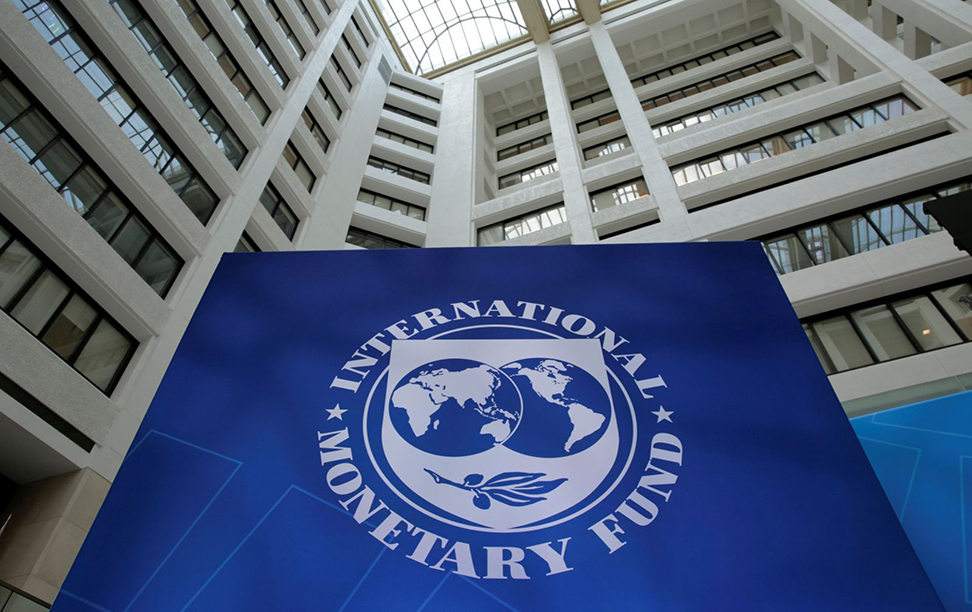November 22, 2021 (MLN): Finally, Pakistan and International Monetary Fund (IMF) authorities have reached a staff-level agreement on policies and reforms needed to complete the sixth review under the Extended Fund Facility (EFF), a press release issued by the fund showed on Monday.
Taking to his official Twitter account, Muzzammil Aslam, Spokesperson to Finance Minister said, the staff-level agreement was reached between Pakistan & IMF after 45 days long discussion between the Finance team & IMF.
“Meanwhile, some media franchises have speculated negatively but we remained focused. This will remove a lot of uncertainties,” he noted.
Completion of the review would make available SDR 750 million or about $1.059 billion, bringing total disbursements under the EFF to about $3,027 million and helping unlock significant funding from bilateral and multilateral partners.
The agreement is subject to approval by the Executive Board, following the implementation of prior actions, notably on fiscal and institutional reforms.
Despite a difficult environment, progress continues to be made in the implementation of the EFF-supported program. All quantitative performance criteria (PCs) for end-June were met with wide margins, except for that on the primary budget deficit, the press release added.
In addition, the government plans to introduce a package of fiscal measures targeting a small reduction of the primary deficit with respect to last fiscal year based on: (i) high-quality revenue measures to make the tax system simpler and fairer (including through the adoption of reforms to the GST system); and (ii) prudent spending restraint, while fully protecting social spending.
According to IMF, GDP growth in FY22 is projected to reach or exceed 4% and 4.5% in FY23.
The press release noted that the country’s inflation remains high, but should start to see a declining trend once the pass-through of rupee depreciation is absorbed, temporary supply-side constraints and demand-side pressures dissipate.
Moreover, the current account is expected to widen this fiscal year despite some export growth due to import demand and international commodity prices.
The virtual discussions continued from October 4 – November 18, 2021, which was led by Ernesto Ramirez Rigo in the context of the 2021 Article IV consultations and the sixth review of the authorities’ reform program supported by the IMF’s EFF.
To note, an additional SDR of 1.015 billion (about $1.386 billion) was disbursed in April 2020 to help Pakistan address the economic impact of the COVID-19 shock.
On the structural front, notable achievements include the finalization of the National Socio-Economic Registry (NSER) update, parliamentary adoption of the National Electric Power Regulatory Authority (NEPRA) Act Amendments, notification of all pending quarterly power tariff adjustments, and payment of the first tranche of outstanding arrears to independent power producers (IPPs) to unlock lower capacity payments fixed in renegotiated power purchase agreements (PPAs).
“The authorities have also made progress in improving the anti-money laundering and combating the financing of terrorism (AML/CFT) framework, although some additional time is needed to strengthen its effectiveness,” IMF said.
On the macroeconomic front, available data suggested that a strong economic recovery has gained hold, benefiting from the authorities’ multifaceted policy response to the COVID-19 pandemic that has helped contain its human and macroeconomic ramifications.
The Federal Board of Revenue’s (FBR) tax revenue collection has been strong. Continued efforts to broaden the tax base by removing remaining preferential tax treatments and exemptions will help generate much-needed resources to scale up critical social and development spending.
At the same time, external pressures have started to emerge a widening of the current account deficit and depreciation pressures on the exchange rate—mainly reflecting the compound effects of the stronger economic activity, an expansionary macroeconomic policy mix, and higher international commodity prices.
In response, the authorities have started to adjust policies, including by gradually unwinding COVID-related stimulus measures. The State Bank of Pakistan (SBP) has also taken the right steps by starting to reverse the accommodative monetary policy stance, strengthening some macroprudential measures to contain consumer credit growth, and providing forward guidance.
The economic outlook continues to face elevated domestic and external risks, while structural economic challenges persist.
In this regard, and looking beyond the near term, discussions also focused on policies to help Pakistan achieve sustainable and resilient growth to the benefit of all Pakistanis. On the fiscal policy front, staying on course on achieving small primary surpluses remains critical to reducing high public debt and fiscal vulnerabilities.
On the Monetary policy front, the press release said, “it needs to remain focused on curbing inflation, preserving exchange rate flexibility, and strengthening international reserves.”
As economic stability becomes entrenched and the independence of the SBP is strengthened with the approval of the SBP Act Amendments, the central bank should gradually advance the preparatory work to formally adopt an inflation targeting (IT) regime in the medium term, underpinned by a forward-looking and interest-rate-focused operational framework, it added.
While some key elements of IT are already in place, including a medium-term inflation objective and prohibition of monetary financing, additional efforts are needed, to modernize the SBP’s operational framework as well as to strengthen monetary transmission and communication.
Advancing the strategy for the electricity sector reforms, agreed with international partners, is important to bring the sector to financial viability, and tackle its adverse spillovers on the budget, financial sector, and real economy. In this regard, steadfast implementation of the Circular Debt Management Plan (CDMP) will help guide the planned management improvements, cost reductions, timely alignment of tariffs with cost recovery levels, and better targeting of subsidies to the most vulnerable.
Substantially lowering supply costs, however, will require a modern electricity policy that: (i) ensures that PPAs do not impose a heavy burden on end-consumers; (ii) tackles the poor and expensive generation mix, including a wider use of renewables; and (iii) introduces more competition over the medium term.
Copyright Mettis Link News
29190







